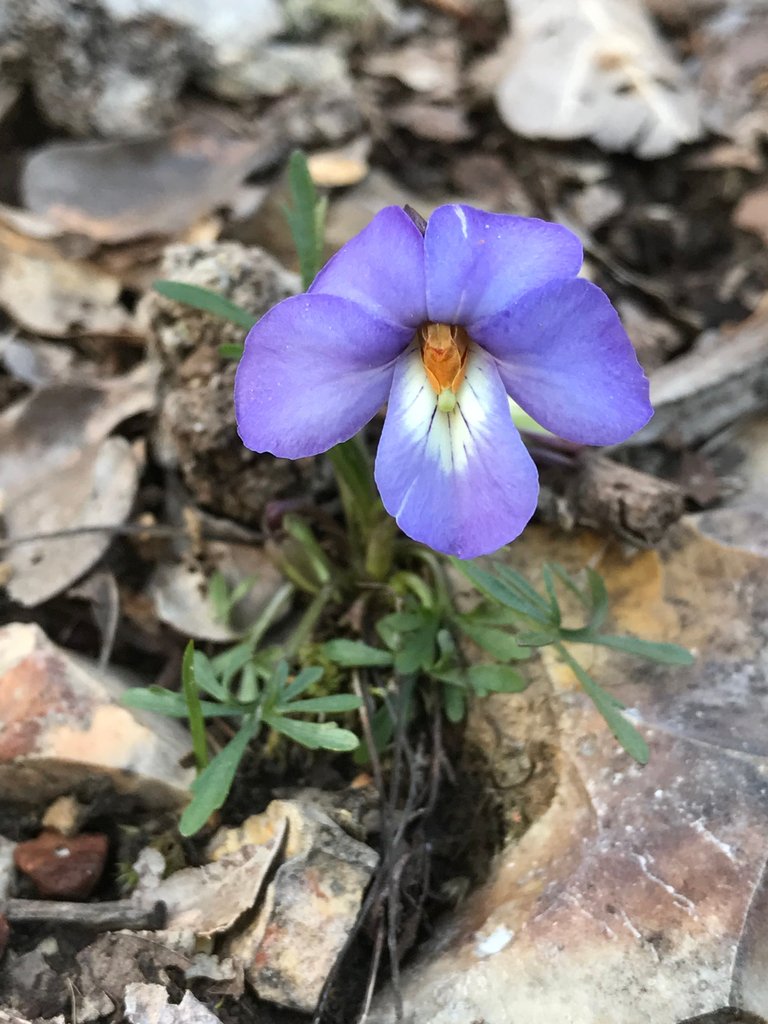I took a quick trip to Dale Sare Conservation Area in Missouri. I have come to really enjoy this 600ish acre plot of land. It is mostly a mixed forest with Oaks and Cedar being the dominant trees. There is also an open field at the top of a hill. Around the hill are multiple drainage's that make mini valleys throughout the area. I've hunted for squirrel's, foraged persimmons and enjoyed the scenery on multiple occasions now. Usually, I am all alone or there is one other car there. This time I was hoping to find Morel's as they have been growing in various parts of the state. I didn't find any, however the purpose of this post is to share what I did find.
The first thing that caught my eye was cedar apple rust. There must have been a crab apple tree or something in the area because this fungus is found when the two types of trees are near one another.
Gymnosporangium juniperi-virginianae
I had only been in this area during the fall, so I was excited to see what kind of spring flowers I would find. I was not disappointed! I found 4 that seemed to be pretty common in the area and then there was one flower that I only found one patch of.
I'm pretty sure the above picture is Cardamine concatenata or Toothwort. The Below picture is of Anemonella thalictroides or commonly known as a Rue Anemone.
As I walked up and down a few of the valleys that I mentioned...I noticed that the Rue Anemones and the Toothwort seemed to only grow on the north facing slopes, because the south facing slopes which were the ones I was looking for Morel's on did not seem to have any flowers. It made me wonder if I had discovered a way to tell the direction I was facing without using the sun or if the flowers would grow on the other slopes as the season progressed. In the drainages I found Pussy Toes or Antennaria parlinii. The picture below is of a female flower the males have yellow on them.
I have had a bit of uncertainty with the next one. I'm pretty sure it is Erythronium albidum or a White Dogtooth Violet also known as a trout lily. What is odd about these one's is that the petals seem to hang down. I am wondering if they just haven't curled back yet.
Below is the flower that I only found one patch of, and also happens to be what I think was the prettiest. Probably because they are purple and orange. I am thinking these are Violoa pedata a.k.a Bird's foot violet. I am not so sure though because there were a few different types of violets in my books, but this one seemed to have the most similar leaves to what I was seeing. It's the shape of the petals that put doubt in my mind.
Other life forms that caught my eye were some different types of mushrooms.
Schizophyllum commune - Common Split Gill
These are apparently common all over the United States. I like the way they look like little feet in this picture. Usually they are distinguishable by their gills but I did not get a good picture of them to show you. They grow on dead tree limbs.
I found some more mushrooms but was unable to identify them so the last picture I'll share is a sad one.
A dead tortoise shell. I found a live one here one time but sadly this one died. I always wonder how tortoises die. Are they most often killed by predators or disease?
Thank you for reading this and I hope you enjoyed! Also, take my IDs with a grain of salt as I am learning and will up vote useful corrections.
Sources
Missouri's Wild Mushrooms - Maxine Stone
Missouri Wild Flowers - Edgar Denison
Ozark Wildflowers - Don Kurz
Various nature facebook groups are super helpful with mushroom and plant IDs
All pictures are original content.








crazy good pics. I hope that turtle had a great life
Thanks! Me too, I bet he sacrificed his life to save the children.
really enjoyed this post! I like learning the names
Thanks me too, I feel like writing them out helps the ol' memory.